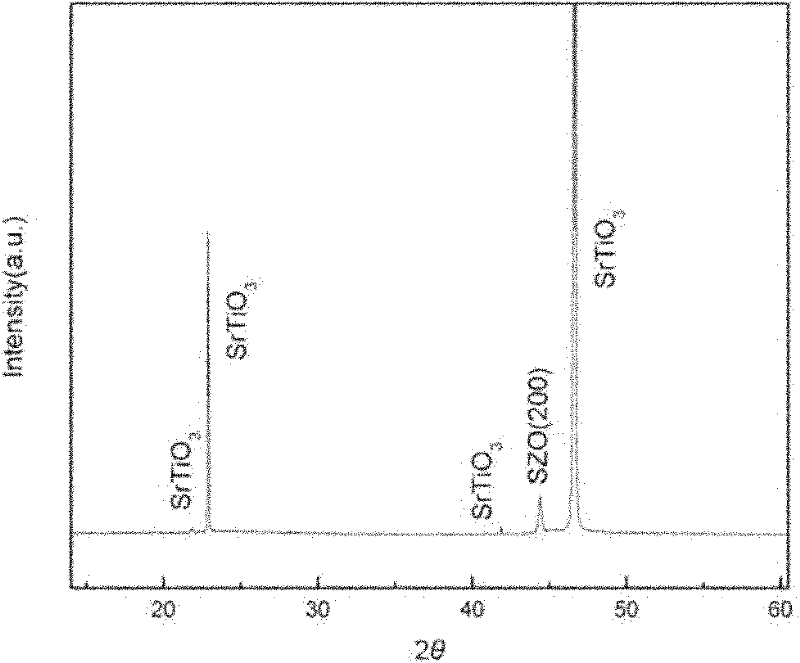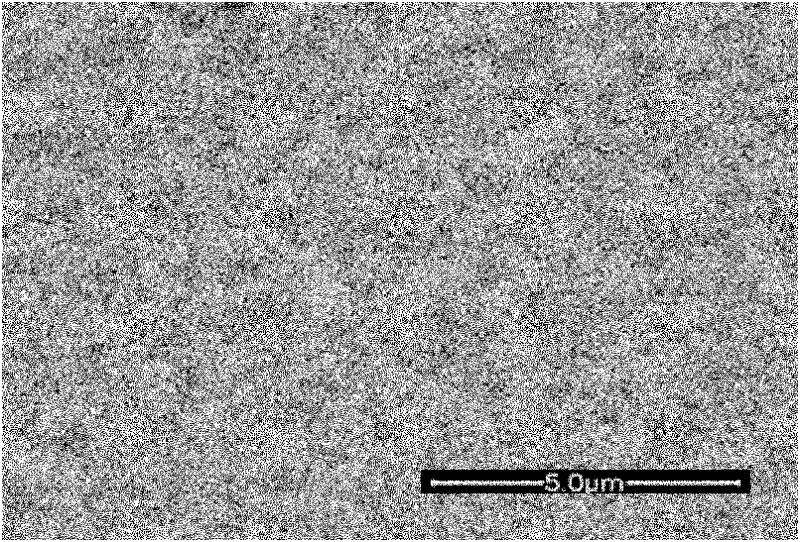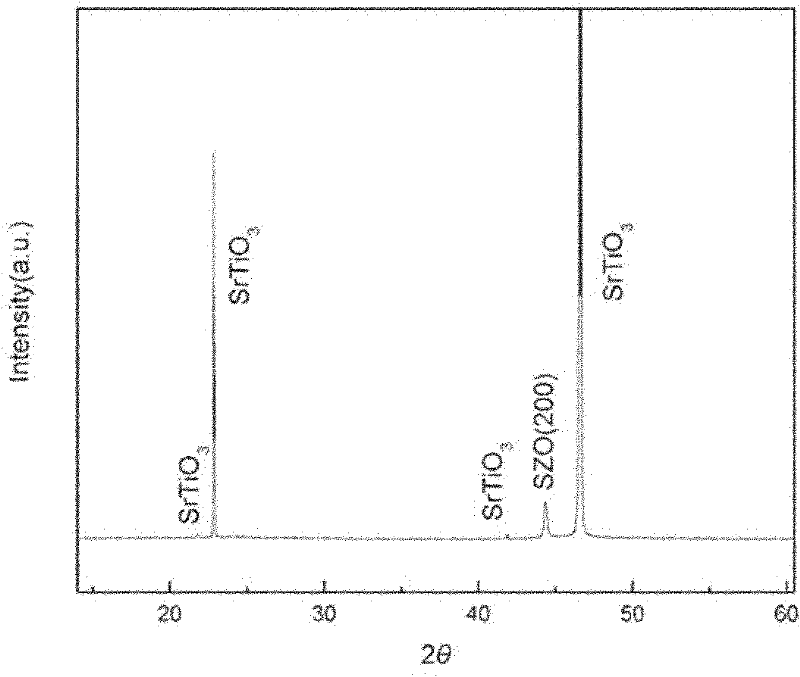Method for preparing high-temperature superconductive coated conductor SrZrO3 buffer film
A coated conductor and high-temperature superconducting technology, which is applied in the field of preparation of high-temperature superconducting buffer layer films, can solve problems affecting the superconducting performance of ReBCO, and achieve the effects of reducing production costs, easy operation and control, and simple production process
- Summary
- Abstract
- Description
- Claims
- Application Information
AI Technical Summary
Problems solved by technology
Method used
Image
Examples
Embodiment 1
[0027] The preparation method of this example consists of the following steps in turn:
[0028] a, anhydrous solution preparation: strontium acetate and zirconium acetylacetonate are equal to the ratio of 1: 1 by the ion number ratio of strontium: zirconium, dissolve in propionic acid, form anhydrous solution;
[0029] b. Colloid preparation: Add polyvinyl butyral (PVB) to the anhydrous solution in step a to form a colloid; the amount of polyvinyl butyral (PVB) accounted for 5% of the total mass of the colloid.
[0030] c. Colloid coating and drying: coat the colloid prepared in step b on the substrate, and then dry; covered on the substrate. The temperature during drying was 150°C.
[0031] d. Thermal decomposition treatment: place the colloid-coated substrate in a sintering furnace, and feed argon into the sintering furnace to raise the furnace temperature from room temperature to 170°C at a rate of 1°C / min, and then at a rate of 0.9°C / min. The speed of min is raised to 5...
Embodiment 2
[0036] The preparation method of this example consists of the following steps in turn:
[0037] a, anhydrous solution preparation: strontium acetate and zirconium acetylacetonate are equal to the ratio of 1: 1 by the ion number ratio of strontium: zirconium, dissolve in propionic acid, form anhydrous solution;
[0038] b. Colloid preparation: Add polyvinyl butyral (PVB) to the anhydrous solution in step a to form a colloid; the amount of polyvinyl butyral (PVB) added accounts for 4% of the total mass of the colloid.
[0039] c. Colloid coating and drying: coat the colloid prepared in step b on the substrate, and then dry; covered on the substrate. The temperature during drying was 100°C.
[0040] d. Thermal decomposition treatment: place the colloid-coated substrate in a sintering furnace, and feed argon into the sintering furnace to raise the furnace temperature from room temperature to 240°C at a rate of 1°C / min, and then increase the temperature at a rate of 0.1°C / min. The...
Embodiment 3
[0045] The preparation method of this example consists of the following steps in turn:
[0046] a, anhydrous solution preparation: strontium acetate and zirconium acetylacetonate are equal to the ratio of 1: 1 by the ion number ratio of strontium: zirconium, dissolve in propionic acid, form anhydrous solution;
[0047] b. Colloid preparation: Add polyvinyl butyral (PVB) to the anhydrous solution in step a to form a colloid; the amount of polyvinyl butyral (PVB) added accounts for 3% of the total mass of the colloid.
[0048] c. Colloid coating and drying: coat the colloid prepared in step b on the substrate, and then dry; covered on the substrate. The temperature during drying was 200°C.
[0049] d. Thermal decomposition treatment: place the colloid-coated substrate in a sintering furnace, and feed argon gas into the sintering furnace to raise the furnace temperature from room temperature to 190°C at 1°C / min, and then at 0.4°C / min The speed of min is raised to 530°C, and th...
PUM
 Login to View More
Login to View More Abstract
Description
Claims
Application Information
 Login to View More
Login to View More - R&D
- Intellectual Property
- Life Sciences
- Materials
- Tech Scout
- Unparalleled Data Quality
- Higher Quality Content
- 60% Fewer Hallucinations
Browse by: Latest US Patents, China's latest patents, Technical Efficacy Thesaurus, Application Domain, Technology Topic, Popular Technical Reports.
© 2025 PatSnap. All rights reserved.Legal|Privacy policy|Modern Slavery Act Transparency Statement|Sitemap|About US| Contact US: help@patsnap.com



